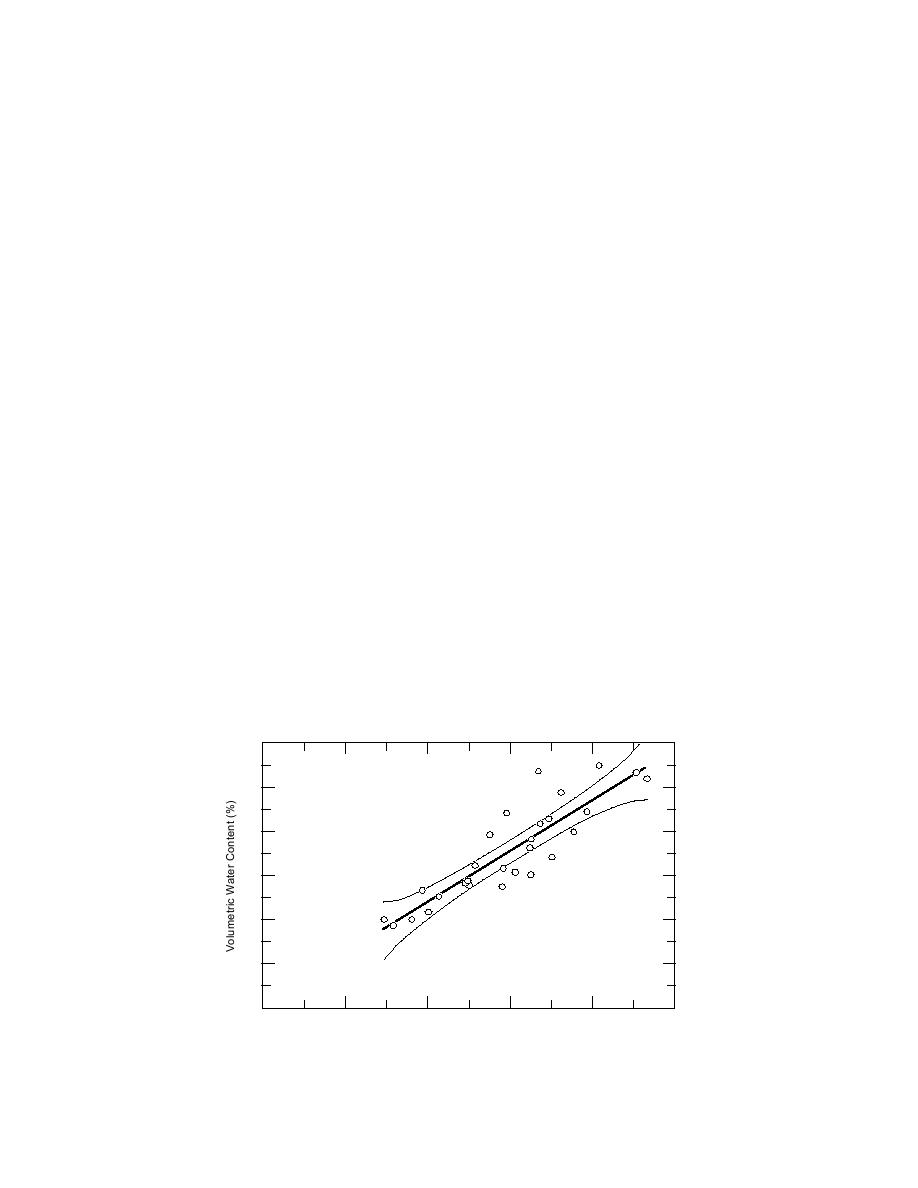
DISCUSSION
mortar contained more paste (cement plus
water). It is known that hardened cement paste
The objective of this study was to develop a
has a specific surface area that is several orders of
relationship between the dielectric constant and
magnitude greater than that of unhydrated
the moisture content of hardened concrete pro-
cement, sand, or coarse aggregate. Since adsorbed
portioned similarly to the concrete used for the
water has a lower dielectric constant than bulk
Denver International Airport pavement. Figure 3
water, a material with a higher surface area, such
shows that time-domain reflectometry can meas-
as the mortar, would be expected to have a lower
ure dielectric constants for concrete and mortar
dielectric constant than a material possessing a
that are predictably influenced by moisture con-
tentthe higher the moisture content the higher
lower surface area, such as the concrete, for equal
water contents. We see this trend in the Figure 3
the dielectric constant. However, neither concrete
data. This suggests that the dielectric constant of
or mortar results could be mathematically
concrete is a function of coarse aggregate and
described using Topp's equation for soils. When
paste content in addition to water content. We did
compared to Topp's predictions (Fig. 3), the test
not investigate these combinations of variables,
results show that TDR will predict a lower mois-
but the relation between dielectric constant and
ture content for concrete and for mortar than for a
water content might consist of a family of curves
soil of equal dielectric constant. This finding
dependent on paste, aggregate, and moisture
agrees with the problem experienced in the field
content.
where TDR, when related to Topp's equation,
Besides moisture content, the two variables
indicated that the Denver pavement was wetter
that we did investigate were the method used to
than it could possibly be. Thus, a separate rela-
embed a probe into concrete and the size of the
tion between dielectric constant and water con-
coarse aggregate. The findings (Fig. 3) show that
tent had to be developed for concrete.
it did not matter if the TDR probes were jiggled
There may not be a unique relationship for all
into the fresh mix or if the mix was carefully
types of concrete. We say this because the results
placed around the probes. The size of the coarse
for concrete were different from those for mortar.
aggregate did seem to have some effect on the
The data (Fig. 3) for mortar were closer to Topp's
results; Figure 3 shows that the smaller aggregate
equation predictions than were those for con-
produced different results from those of the
crete, with mortar having a lower dielectric con-
larger aggregate. However, the results from the
stant than concrete at any water content. The pri-
smaller aggregate bracketed those from the larger
mary differences between the mortar and the
aggregate; thus, we are uncertain what effect
concrete of this study (Table 2) were that the mor-
aggregate size has.
tar contained no coarse aggregate and that the
12
10
8
6
4
Y = 4.425 + 1.146X + 0.0001928X2
2
R2 = 0.775
0
4
6
8
10
12
14
Dielectric Constant (K)
Figure 4. Second-order polynomial equation for concrete. A 95% confidence
band is provided.
6



 Previous Page
Previous Page
